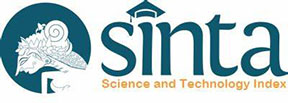Diversity of Insects in Shallot (Allium ascalonicum L) Plantations at Various Altitudes
DOI:
https://doi.org/10.32734/jopt.v5i2.2994Keywords:
Diversity, Insect, Shallow, AltitudeAbstract
Recently the improvement of shallot seed quality using true shallot seed has been developed. This research was aimed to know diversity of insects and the role of insects on the cultivation of shallot seeds in various altitudes. This research was conducted in three different districts (Deli Serdang, Simalungun and Toba Samosir districts) in Plant Pests and Diseases Laboratory, Faculty of Agriculture, University of North Sumatra, Medan from July 2017 until January 2018. This research used four different insect traps (sweep net, pitfall trap, hand picking, and yellow trap), and repeated for six times. The results showed that insects caught on shallot farmings in Balige highland were 11 orders and 31 families with the highest relative density value was 22.5% and the lowest relative density was 0.35%. The value of insect diversity index of Shannon-Weiner (H') on shallot farming in Balige was 2.72 (moderate) and the value of insect evenness index (E) was 0.71 (high). The insects caught on shallot farming in Pematang Siantar middleland were 11 orders and 22 families with the highest relative density value was 28.7% and the lowest relative density was 0.35%. The value of insect diversity index of Shannon-Weiner (H') on shallot farming in Pematang Siantar 2.42 (moderate) and the value of insect evenness index (E) was 0.71 (high), and on shallot plantations at Lubuk Pakam lowland were 10 orders and 21 families with the highest relative density value was 24.7% and the lowest relative density 0.39%. The value of insect diversity index of Shannon-Weiner (H') was 2.32(moderate) and the value of insect evenness index (E) was 0.85 (high).






















